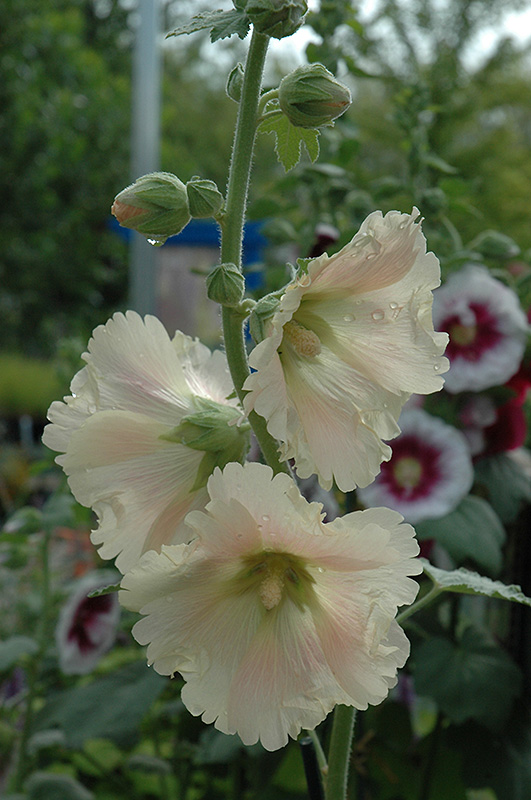>> Home
Plant Height: 4 feet
Flower Height: 6 feet
Spread: 18 inches
Sunlight:
![]()
Hardiness Zone: 3a
Description:
A beautiful, fast growing and extremely hardy variety perfect for borders, massing and cut flower arrangements; tall, strong stalks feature butter yellow flowers, standing out against green foliage throughout the summer months
Ornamental Features
Russian Hollyhock features bold spikes of buttery yellow round flowers rising above the foliage from mid to late summer. The flowers are excellent for cutting. Its large crinkled round leaves remain emerald green in color throughout the season.
Landscape Attributes
Russian Hollyhock is an herbaceous perennial with a rigidly upright and towering form. Its relatively coarse texture can be used to stand it apart from other garden plants with finer foliage.
This is a relatively low maintenance plant, and may require the occasional pruning to look its best. It is a good choice for attracting bees and hummingbirds to your yard, but is not particularly attractive to deer who tend to leave it alone in favor of tastier treats. Gardeners should be aware of the following characteristic(s) that may warrant special consideration;
- Self-Seeding
Russian Hollyhock is recommended for the following landscape applications;
- Vertical Accent
- Mass Planting
- General Garden Use
Planting & Growing
Russian Hollyhock will grow to be about 4 feet tall at maturity extending to 6 feet tall with the flowers, with a spread of 18 inches. It tends to be leggy, with a typical clearance of 1 foot from the ground, and should be underplanted with lower-growing perennials. The flower stalks can be weak and so it may require staking in exposed sites or excessively rich soils. It grows at a fast rate, and tends to be biennial, meaning that it puts on vegetative growth the first year, flowers the second, and then dies. However, this species tends to self-seed and will thereby endure for years in the garden if allowed. As an herbaceous perennial, this plant will usually die back to the crown each winter, and will regrow from the base each spring. Be careful not to disturb the crown in late winter when it may not be readily seen!
This plant should only be grown in full sunlight. It prefers to grow in average to moist conditions, and shouldn't be allowed to dry out. It is not particular as to soil type or pH. It is highly tolerant of urban pollution and will even thrive in inner city environments. This species is not originally from North America.
